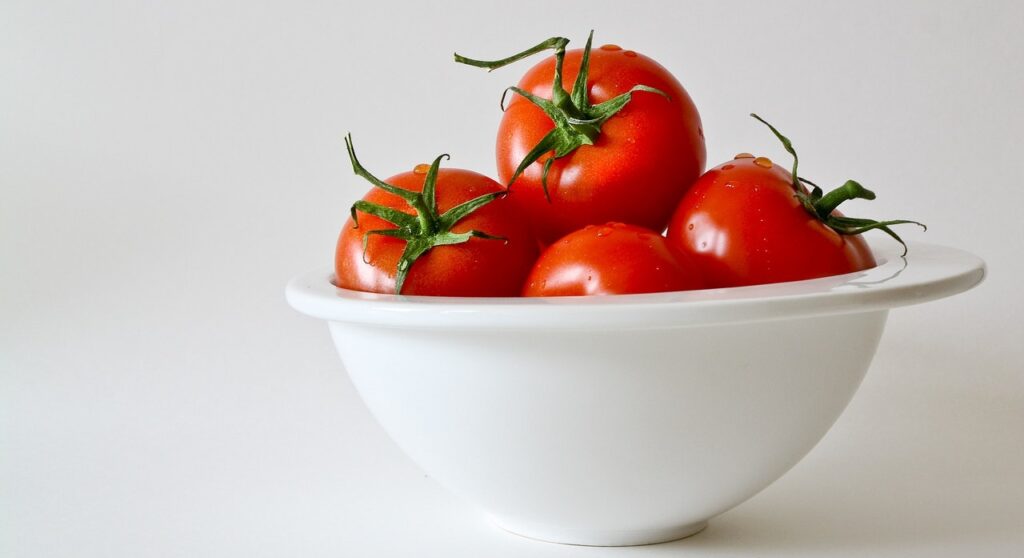This is a basic tomato sauce that have been making for over 15 years since learning it from an Italian friend (who picked it up from his mother). I use this sauce as the foundation for most everything I make that requires a basic red sauce. I’ve always made this sauce by feel, tweaking it here and there, using different amounts of various ingredients, and getting pretty good results each time (albeit always a little different).
The hardest part about this sauce is chopping onions, a duty I detest (due to the soap-opera-worthy teary face result) so I relegate that chore to my sous chef (husband) whenever possible. Apart from that, the only notable annoyance is the time it takes. There are plenty quicker tomato sauces for sure (which I plan to post soon), but this one takes a little time and patience – low and slow is the mantra. If you are short on time, you can probably get away with simmering for about an hour; optimally you’ll let it go longer for 2-3 hours. Keep the lid on so that the sauce doesn’t evaporate away during the cooking process.
There is a lot of flexibility in the recipe and you can make adjustments to make this sauce your own. Try adding different herbs, using different wines (yes you can even use white wine), or adding spices (paprika or chili flakes anyone?). Use whole tomatoes and mash them down for a really chunk sauce or puree the whole thing for a smooth sauce.
Once you have the sauce, add anything you want to it – ground beef, meatballs, use it for lasagna, Eggplant Parmesan, etc. I often just go for the humble spaghetti bolognaise myself. Enjoy!
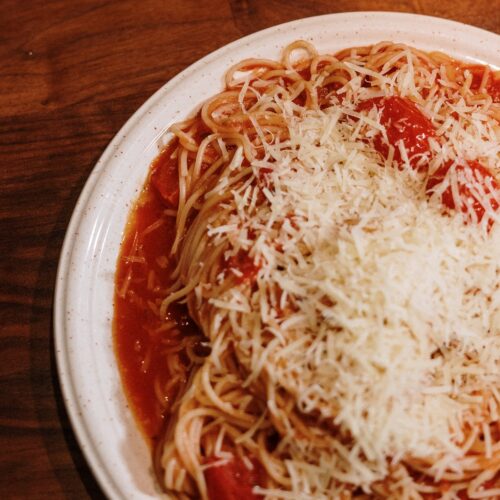
Basic Red Sauce
Print Pin RateEquipment
- 3.5 quart pot
- hand blender if you want a smooth sauce
Ingredients
- 2 tbsp oil
- 2 cans 28oz. tomatoes, see notes
- 2 cups onion, finely chopped
- 5-6 cloves garlic, minced
- 1 tbsp Italian seasoning
- 3 tbsp tomato paste
- 3/4 cups red wine
- 1/2 tbsp salt, adjust to taste later as needed
- 1/2 tbsp pepper, adjust to taste later as needed
- 1/2 tbsp sugar, adjust to taste later as needed
- 2 bay leaves
How I Make It
- Heat a couple tablespoons of oil in a heavy bottomed pot. This recipe yields a lot of sauce so make sure your pot is large enough for the volume of the tomatoes. Sweat the onions and garlic until softened. Be care not to let them burn; turn down your heat if they start to brown. Add Italian seasoning to the onion/garlic and incorporate well.
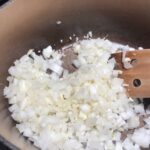
- Add tomato paste and mix through. Cook the paste for about a minute.

- Add the red wine. Once incorporated, add both cans of tomatoes and the two bay leaves.
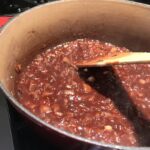
- Then add sugar, salt, and pepper. Note that the amount of sugar will depend on how acidic your tomatoes are, which will vary from brand to brand and even batch to batch, so adjust accordingly. Add the salt and pepper to taste. You may want to add less at this stage and adjust the amount at the end.
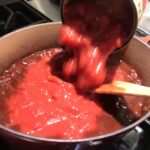
- Bring to a boil then down to a simmer. Cover it and let the sauce cook over low heat, simmering for at least an hour up to 3 hours. I cook this sauce low and slow, usually for a 2-3 hours.
- Check and stir the sauce occasionally to make sure it isn't burning or sticking to the bottom of the pot. Turn down the heat if it is boiling too rapidly. After it's done simmering, remove the bay leaves and blend the sauce to smoothness with a hand blender (if desired). Taste and make final adjustments to sugar, salt, pepper.
- Serve with pasta or use it as a base for other recipes requiring red sauce!
Notes
- You can use any type of canned tomatoes (whole, chopped, crushed, puree, etc.). I prefer using whole San Marzano tomatoes whenever possible. Depending on how chunky you like your sauce, you may need to blend (or partially blend) the sauce at the end to get your desired consistency. A hand blender comes in handy for this.
- Sugar is added to balance the acidity in the tomatoes, which will vary. You should adjust to suit your taste and preference.
- Red wine! Whoever said to never cook with wines you wouldn't drink must've meant don't use wine that is skunked or has turned, because if I cooked with the wines I drink I would go broke. My preference for this recipe is to use one of those small plastic bottles (you can buy in packs of 4) of Sutter Home or similar. It is the perfect amount, and doesn't leave any waste. I use Cabernet Sauvignon or Merlot but any dry red will work. I've even used dry white wine or vermouth which works too.

